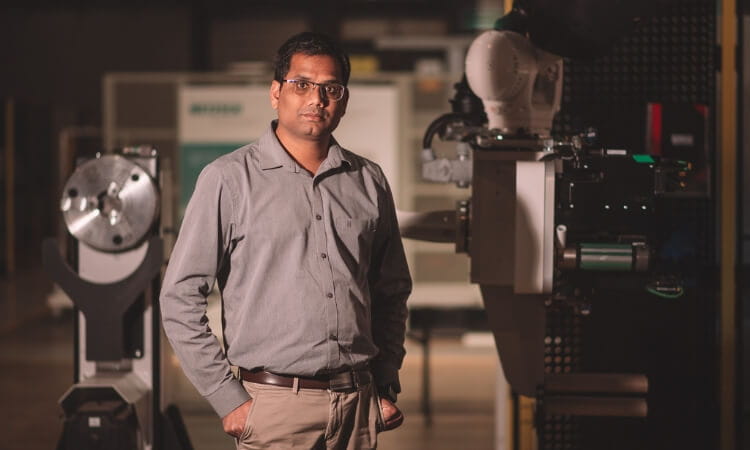Saving homes and lives with fire-resistant 3D-printed building products

As the threat of bushfires intensifies due to climate change, the University of Southern Queensland (UniSQ) is at the forefront of developing new, lightweight, and fire-resistant building products.
A team of researchers will use innovative technologies, such as aerated concrete and 3D concrete printing, to develop masonry blocks and façades designed to improve the protection of houses and structures against bushfires and building fires.
The project has been supported by a $962,000 grant through Advance Queensland’s 2024 Industry Research Projects Program.
UniSQ material engineer Dr Saya Ramakrishnan leads the project.
Dr Ramakrishnan said innovative building products with superior fire resistance would improve the safety of residents in bushfire-prone areas.
“The frequency and intensity of bushfires have been rapidly increasing in Australia, especially in Queensland, where we have seen significant damage to houses during bushfire events,” he said.
“The building products we intend to develop will increase the bushfire resilience of buildings and structures by six times while also reducing the heating and cooling energy demands of houses by 30 per cent.”
In addition to addressing the high carbon emissions of building products using green and sustainable cement materials, Dr Ramakrishnan said manufacturing the products using robotics technology would help advance the construction industry.
“While most of the major industrial sectors, including automobile, aerospace, agricultural and manufacturing industries, have significantly increased their productivity by using automation and robot technology, the construction industry still relies heavily on manual labour,” he said.
“The 3D printing technology will replace manual labour in the construction industry with significant enhancement in productivity.
“This will assist in meeting the high demand for housing and infrastructure in Queensland, particularly to align with the expected demand increase due to Brisbane’s 2032 Olympics.”
The project team includes Dr Saya Ramakrishnan, Professor Allan Manalo from UniSQ, and QUT’s Professor Mahen Mahendran and Dr Anthony Ariyanayagam with Brickworks and GreenTech Cement as the industry partners.
Learn more about UniSQ’s Centre for Future Materials.


